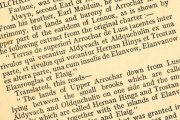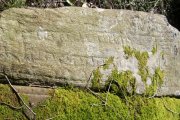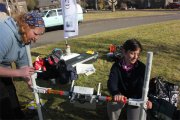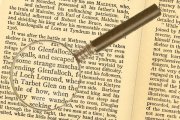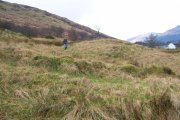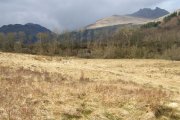Medieval
Location: The strategic location of the three villages connected by this 'corridor' between mountains has shaped the history of the area for thousands of years.
Ploughgate: At his workshop on March 23, 2013 place name expert Dr Simon Taylor (Glasgow University) provided us with the following information about the place name of Arrochar:
"Lennox is well-known to have been the home of the arachor, a word fittingly preserved in the name of the village of Arrochar at the head of Loch Long. Like carucate, arachor has an obvious etymological connection with ploughing, and the texts leave no doubt that arachor was in fact a Gaelic term for the ploughgate’ (Barrow 2003 [1973], 246). It derives from OG ar ‘act of ploughing, tilling, husbandry; the land ploughed, cultivated land’ (DIL). Note that a ploughgate or carucate (the same thing) was based on the amount of land a plough-team of eight oxen could plough in an annual season, and is very roughly equivalent to 120 acres. Presumably it was all the arable land in what became the parish of Arrochar that together was reckoned as one ploughgate."
Cheese and Charters: In 1225, the Lennox Cartulary (collection of deeds or charters often relating to land titles) says that the Earl of Lennox, Maldoven
"has given, granted, and established by this his present charter, to Gilmore son of Maldoven, that land called Luss (DNB), ...to hold of him and his heirs in feu and heritage with all its just pertinents, with the whole advowson of the church of Luss; rendering therefrom to him and his heirs, in the common army of the king, two cheeses from whichever house in the said land where there may be cheese, for all services, both forinsec and intrinsic, and customs, exactions and demand; and performing the common royal aids that rightfully pertain to two arachors in the earldom of Lennox."
Clan MacFarlane: Thus, during the late medieval and post-medieval periods, the lands around Arrochar belonged to the MacFarlane clan, when the then Earl of Lennox granted them to his son, Gilchrist in 1225. Many exciting stories surround the Clan MacFarlane - visit the various MacFarlane websites and learn more about them for yourself! The area near Ballyhennan Church in Tarbet is believed to have been the site of a ‘confrontation’ between the MacFarlanes and Haco’s Vikings around 1263, though no documentary or archaeological evidence for this has been found. Their ancestral lands were here in the Arrochar area until they were sold off in payment of debts in 1767.
Castle or dwelling house?: It is said that a castle was built at Tarbet in the 16th century after the chief of the Clan MacFarlane's principal stronghold at Inveruglas was destroyed in Cromwell's time (J Irving 1879). This 'castle' or house on the mainland was said to be near the shore of Loch Lomond in an area still known as Clattochmore. The Canmore record refers to it as a 'castle', though oral history suggests it was a more modest dwelling. The Dewar Manuscripts, which are based on local folk tales, describe it as being '...but thirty-four feet long and thirteen broad...'. Canmore states that no part of the buildings remained in 1869, except portions of the foundations. The Clan seat later moved to a house at New Tarbet (WoSAS PIN 1791), later Inverioch House (now the Claymore Hotel), which was built in 1697.
Blog
Click on the link here to check out our Facebook page.
Events
Click here to find out about forthcoming events and how to get involved.
Timeline
Click here to see our timeline of events.
Location
Click here to find out where the Hidden Heritage Project is taking place.
Contact Us
Click here for our contact details.


